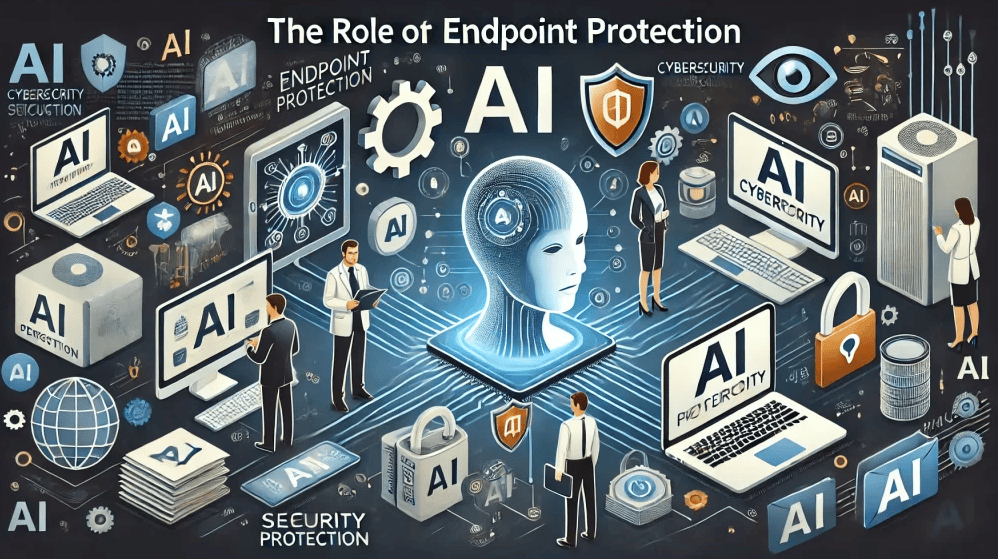
In today’s hyper-connected world, cybersecurity threats are becoming increasingly sophisticated, frequent, and damaging. Traditional security solutions like signature-based antivirus software are no longer sufficient to protect against modern threats such as zero-day attacks, ransomware, and advanced persistent threats (APTs). This is where Artificial Intelligence (AI) and Endpoint Protection step in, offering a powerful approach to detecting and responding to these threats in real time.
What is Advanced Threat Detection?
Advanced threat detection refers to the use of proactive and intelligent security technologies to identify, analyze, and respond to cyber threats—especially those designed to evade traditional defenses. It goes beyond known threat signatures by focusing on behavioral analysis, machine learning, and real-time monitoring to detect anomalies that indicate a potential attack.
The Changing Cybersecurity Landscape
Why Traditional Security is No Longer Enough
Traditional security tools like firewalls and antivirus software typically rely on signatures, patterns, or known threats to identify and block malicious activity. While effective for known, static threats, these methods fall short when it comes to new, dynamic, and evolving attacks.
AI and machine learning (ML) bring dynamic, adaptive intelligence to cybersecurity.
The Role of AI in Advanced Threat Detection
AI’s Unique Advantage in Cybersecurity
Artificial Intelligence offers several advantages:
- Behavioral Analysis: Detects anomalies based on learned behavior.
- Predictive Intelligence: Identifies potential threats before they occur.
- Real-Time Response: Automates detection and response.
- Threat Correlation: Links data across systems for context-aware analysis.
- Self-Learning: Continuously improves over time.

Endpoint Protection: The First Line of Defense
What is Endpoint Protection
Endpoint Protection secures devices such as laptops, desktops, servers, and mobile devices. These tools include antivirus, firewall, and encryption services but have evolved to integrate AI for proactive defense.
Modern Endpoint Protection Includes:
- Antivirus and Antimalware powered by AI
- Real-time behavioral monitoring
- Threat hunting and forensic tools
- Data loss prevention (DLP)
- Device control and encryption
- Zero-trust policies
Solutions like Sophos Intercept X, CrowdStrike Falcon, and Microsoft Defender for Endpoint exemplify how AI is built into endpoint security to predict and prevent attacks before they cause harm.
How AI Enhances Endpoint Protection
- Behavioral Analysis: AI establishes a baseline of normal endpoint and user behavior.By continuously monitoring activities and identifying deviations from this baseline – such as unusual process execution, suspicious network connections, or unauthorized access attempts – AI can flag potentially malicious actions in real-time, even if they don’t match known signatures.
- Anomaly Detection: ML algorithms excel at identifying outliers and anomalies within massive datasets.This allows the detection of novel attack vectors and previously unseen malware variants that would otherwise evade signature-based detection.
- Predictive Analysis: By analyzing historical threat data and identifying emerging trends, AI can predict potential future attacks and proactively strengthen defenses against likely attack vectors. This allows organizations to anticipate and prepare for evolving threats.
- Enhanced Threat Intelligence: AI can automatically process and correlate vast amounts of threat intelligence feeds, identifying relevant indicators of compromise (IOCs) and tactics, techniques, and procedures (TTPs) associated with advanced threat actors. This enriched context improves the accuracy and speed of threat detection.
- Reduced False Positives:Sophisticated AI algorithms are designed to learn and adapt, reducing the occurrence of false positive alerts that can overwhelm security teams and hinder effective threat response.
- Real-Time Detection and Response: AI-powered EDR solutions can analyze endpoint data in real-time, enabling immediate detection of malicious activity and automated or semi-automated responses to contain and remediate threats before they can cause significant damage.
Benefits of AI-Driven Endpoint Security
| Feature | Traditional Security | AI-Powered Endpoint Security |
| Detection Speed | Minutes to hours | Near real-time |
| Accuracy | High false positives | Context-aware decisions |
| Adaptability | Reactive | Predictive and adaptive |
| Response Capabilities | Manual | Automated and scalable |
| Threat Coverage | Known threats only | Known + unknown threats |
Common Threats Caught with AI and EDR
- Zero-day malware
- Fileless attacks
- Ransomware (e.g., LockBit, Ryuk)
- Credential theft and lateral movement
- Insider threats
- Advanced persistent threats (APT)
Real-World Example
Imagine an employee unknowingly downloads a malicious PDF that executes a script to install a remote access trojan (RAT). Traditional antivirus might miss it if it’s a new variant. But an AI-powered EDR system detects abnormal script behavior, isolates the endpoint, alerts the security team, and blocks further network communication—all within seconds.
Steps for Leveraging AI and Endpoint Protection for Advanced Threat Detection:
- Implement a Modern Endpoint Protection Platform:Upgrade from legacy antivirus solutions to a comprehensive EPP/EDR platform that integrates AI and behavioral analysis capabilities.
- Centralized Data Collection and Analysis: Ensure the platform collects and analyzes data from all endpoints in real-time, providing a holistic view of activity across the organization.
- Baseline Establishment and Behavioral Monitoring: Allow the AI algorithms to learn normal behavior patterns for users, devices, and applications within your environment.
- Threat Intelligence Integration: Connect your EPP/EDR solution with reputable threat intelligence feeds to enrich detection capabilities.
- Configure Automated Alerting and Response: Define clear thresholds and automated response rules for suspicious activities identified by the AI.
- Empower Security Analysts with AI-Driven Insights: Provide security teams with the tools and training to effectively leverage the insights and recommendations provided by the AI-powered platform for threat hunting and incident response.
- Continuous Monitoring and Tuning: Regularly review and fine-tune the AI algorithms and security policies based on your organization’s specific threat landscape and evolving needs.
- Integrate with Other Security Layers: Ensure your endpoint protection platform integrates seamlessly with other security tools, such as SIEM and network security solutions, for a more comprehensive defense strategy.
Real-World Example
An e-commerce website uses three web servers. When a customer visits the site, the load balancer directs their request to the least-busy server. If one server is slow or under maintenance, traffic is automatically redirected to others.
Conclusion
AI-driven advanced threat detection paired with endpoint protection strengthens an enterprise’s ability to prevent, detect, and respond to modern cyber threats. By adopting AI-powered endpoint protection, organizations can ensure that their endpoints are secure, adaptive, and resilient.


